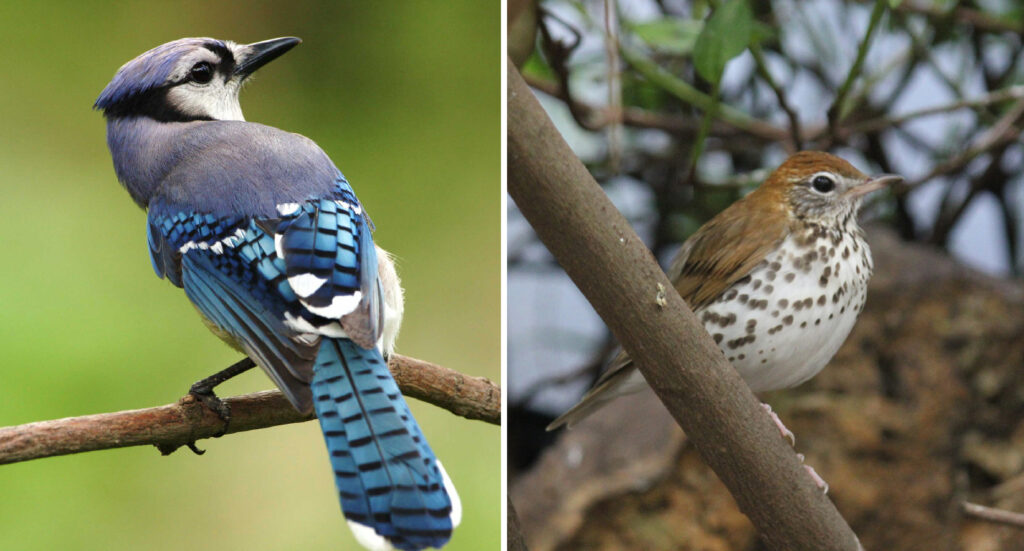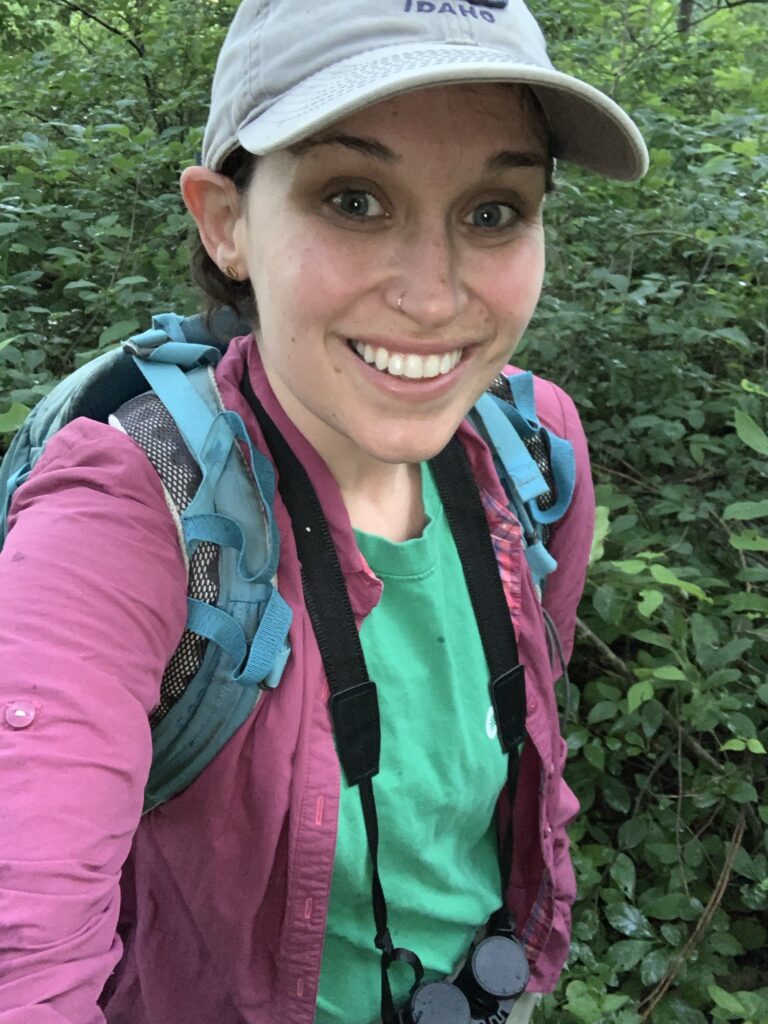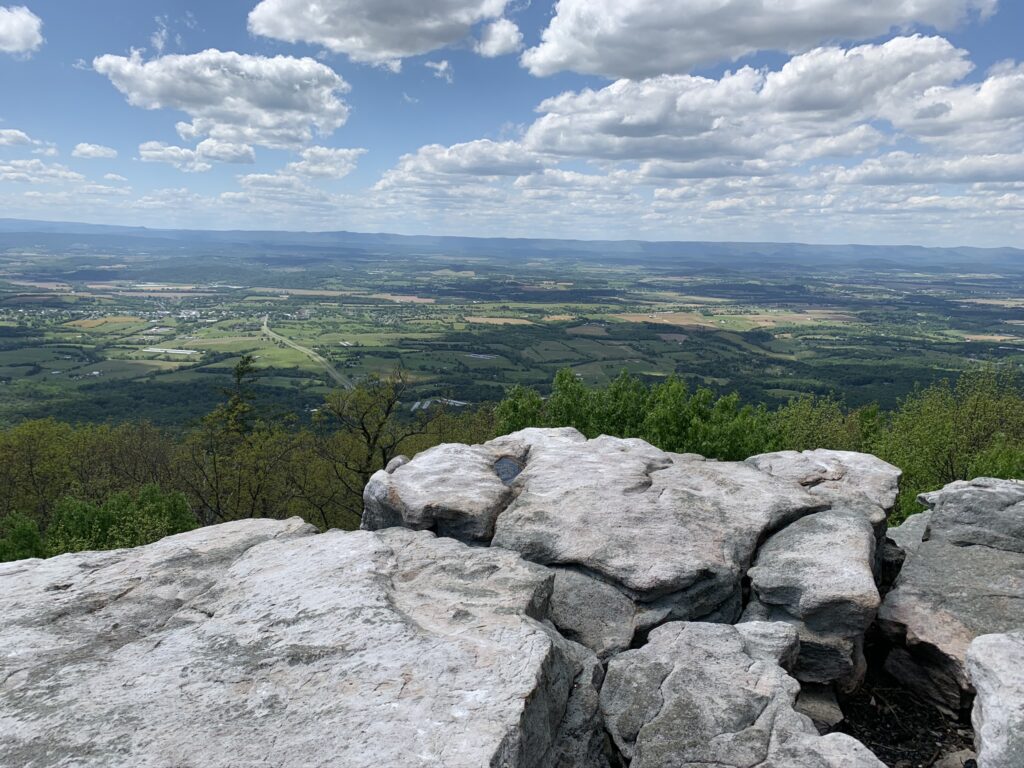by Caitlyn Dittmeier, Smithsonian Working Land and Seascapes intern
At 6 a.m., bird songs chime a new day of field work for Amy Hruska, a postdoc with the Smithsonian Environmental Research Center (SERC) and Chesapeake Working Land and Seascapes ecologist. Recording the species for every tweet and chirp she hears for 20 minutes is hard work. But Hruska is more concerned about a looming silence. Since 1970, 1 billion birds have disappeared from North American forests, leading scientists like Hruska to study the effects of habitat loss on local populations.
Forests once covered 95% of the Chesapeake Bay landscape. But after centuries of intensive farming and development, approximately half of that forest has been cleared. The remaining forest exists in insular patches, bordered by croplands, roads and cities. Scientists understand that fragmentation threatens native wildlife, but they know far less about its impacts over a long period of time.
Curious to know more, Hruska launched a new project investigating how changing land use has transformed the Bay landscape over the past 40 years. To do so, she’s revisiting the same forest patches that SERC researchers studied decades ago.
In the late 1970s and early 1980s, plant ecologist Dennis Whigham and ornithologist James Lynch surveyed Maryland upland forests in one of the earliest studies on landscape fragmentation in the region. Scientists wanted to find out if fragmentation had any connection to declines in migratory songbirds. But since most forested lands in the Mid-Atlantic were and still are privately owned, little data on forest patches existed.
Barring a few sites, “everything we looked at had never been sampled before,” Whigham said.
The project showed fragmentation’s impacts are complex. Forest patches are important for songbirds, but the impacts vary by species. Migratory species like wood thrushes were found to be less tolerant of fragmentation than common backyard species like blue jays.

The Whigham-Lynch study was the largest of its kind at the time.
“They sampled 270 plots. That is huge!” said Hruska, who’s resurveying as many of the patches as she can. It’s a tall task. Whereas teams of botanists and birders helped Whigham and Lynch, Hruska works mostly solo. But she enjoys the challenge.
“There are many interesting questions we can ask just by going places people have already been,” she said.
To locate the original patches, Hruska follows a paper trail. At SERC and the Smithsonian Institution Libraries and Archives, she digitized Whigham and Lynch’s files of field notes, datasets and hand-drawn topographic maps. Using Geographic Information Systems (GIS), she compares historical maps with new satellite imaging of the landscape to study how the patches have changed over time.
With permission from landowners, Hruska visits forest fragments of varying sizes and shapes and bordered by different land uses. She practices the same surveying methods as past researchers—recording bird calls and counting and measuring plants during the summer. This gives her a consistent comparison between old and new datasets.
“To me, this project has everything,” Hruska said. “First, there is an archaeological component: going to the archives and sorting through old data. Second, the field component allows me to work with really engaged landowners and managers and collect data on really unique forest patches. Third, I get to embrace my inner computer geek with mapping and coding.”
Studying the landscape from multiple angles has allowed Hruska to identify patches altered by agriculture, compared to others carved by the D.C. urban sprawl. To her surprise, half the patches remained about the same size. A third decreased, primarily from urbanization. The rest grew, reflecting forest regrowth on abandoned agricultural fields.
Hruska has expanded her study to include patches in Virginia as well. As she returns to the forests this May, she will collect more data to determine which plant and songbird species are most sensitive to fragmentation. Biodiversity forms the foundation of healthy, functioning ecosystems. Knowing which species indicate a healthy landscape can help landowners monitor forest quality.
“Using indicator species is a good first step in terms of making connections and thinking about conservation on your own land,” said Hruska. “It’s not the perfect solution, but it has the potential to be the snowball that creates change.” Bird-friendly changes in land management could transform the Chesapeake Bay landscape over the next 40 years to ensure the songs of biodiverse forests endure.



